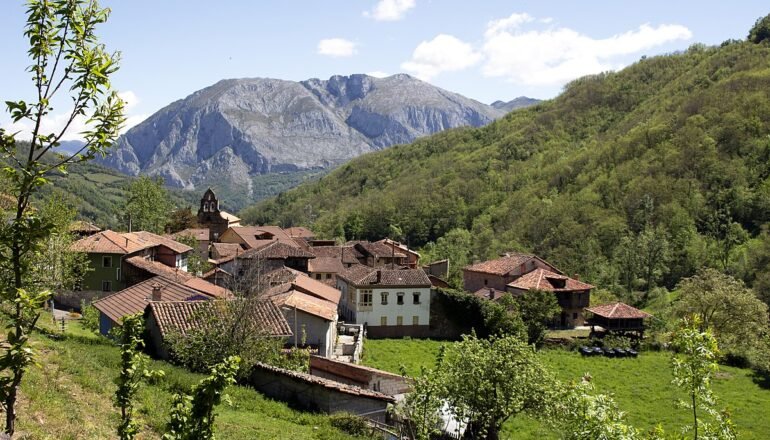“You can go there a million times and never see the same things!” or so says nearly every devoted hiker I meet about their favorite routine hikes. There is undoubtedly some wisdom in that claim, but how does one keep seeing the world from a new angle every time? That’s what I want to know! Therefore, I hike the Ruta de Las Xanas, also called “Little Cares” in the beautiful autumn in Asturias.
I decide to join a free guided tour by the environmental association BioDevas and the Hotel de Asociaciones Santullano. We leave Oviedo’s bus station by taking the 9:00am bus to Villanueva. Although it is possible to take public transport, the Xanas trail is already quite far up in the mountains, so only few busses go there. Therefore, it is important to check the bus schedules before going to avoid any unpleasant surprise!
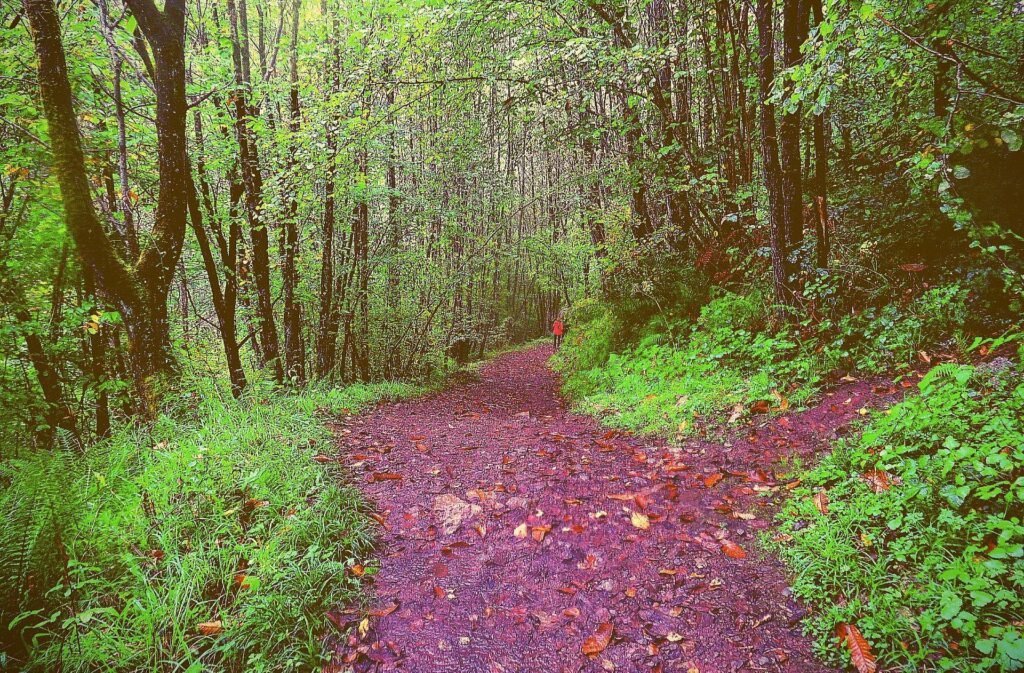
Starting off in Villanueva
Here we are, back to the Ruta de las Xanas, called “Little Cares” for its resemblance to the famous Ruta del Cares. Today, the surrounding nature is graced with the first autumn colours and an otherworldly mist drapes around the mountain peaks. The whole scenery gives off prehistoric vibes and you can easily picture tiny dinosaurs scurrying away and into the woods at your approach. Compared with summer, autumn in Asturias is perfect for those who enjoy misty and enigmatic landscapes. The smaller number of hikers gives a more intimate feel to the hike. This time, let’s look for the plants and animals that also inhabit the world of the Xanas!
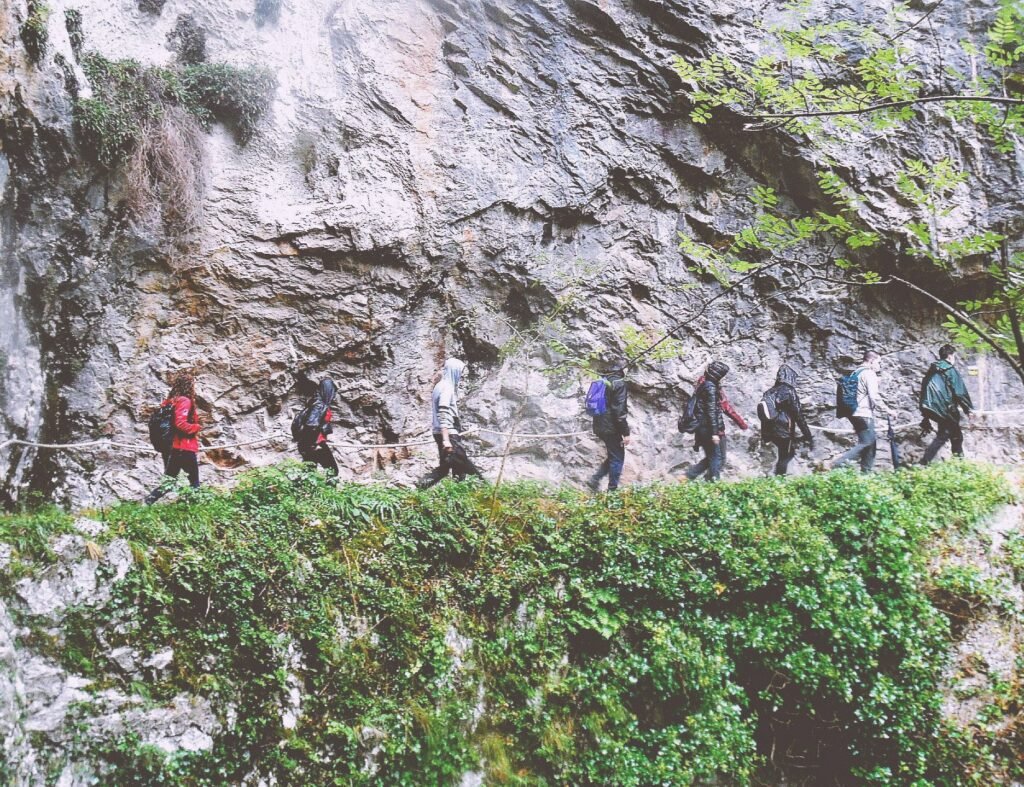
The defile of the Xanas
A drizzling rain welcomes us as we get off the bus. Fortunately, it does not last long and only adds to the nice autumn atmosphere. We walk a few hundred meters up the road to a wooden sign that indicates the start of the Xanas trail. Besides the happy chats of my Spanish fellow hikers, the only sounds come from the nymph river below us.
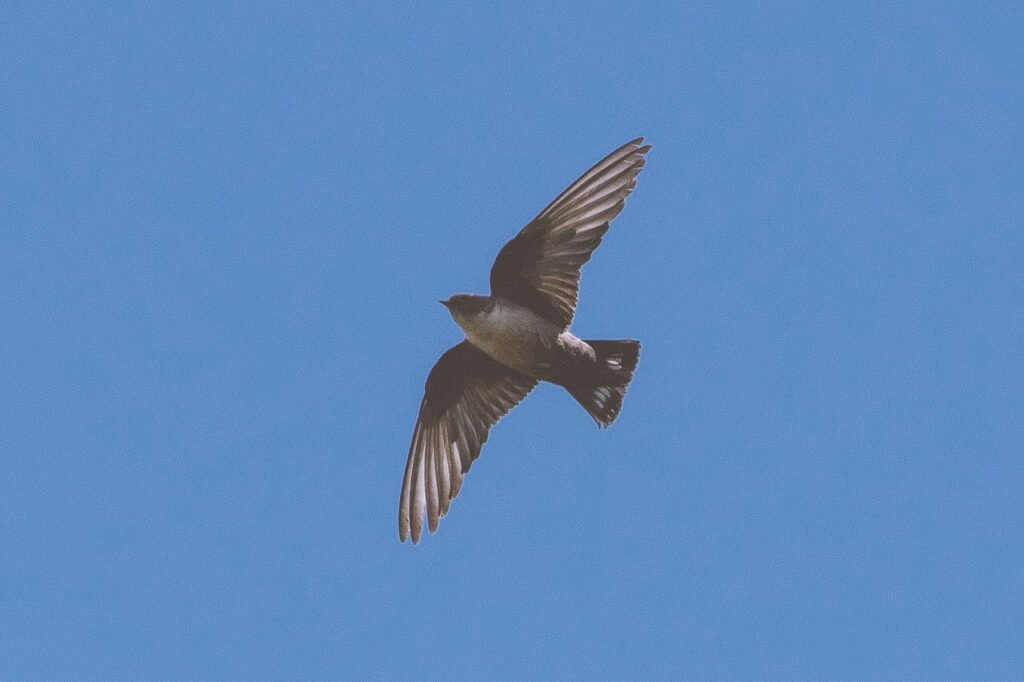
But only after a few minutes, we get our first glimpse of wildlife! A flock of crag martins (Ptyonoprogne rupestris) swiftly passes us by, and the imposing figure of a griffon vulture (Gyps fulvus) quickly disappears in the fog. Our guides for today, José Carlos, Tarik and Andrés tell us about the origin of the Xanas myth, about how, over thousands and thousands of years, the river carved the entire pass that surrounds us. They also introduce us to the various species that live here, such as the Northern wheatear (Oenanthe oenanthe), the common blackbird (Turdus merula), the robin (Erithacus rubecula) and the vultures. The Egyptian vulture (Neophron percnopterus) has already migrated to Africa and won’t be back before next spring. Some of the luckiest hikers, however, have been able to spot otters (Lutra lutra) downstream of the defile!

Autumn in Asturias
As we’re headed to the forest, discreet patches of brown and orange timidly come into sight… October is the perfect season to enjoy the vegetation and pick up the autumn fruits that cover the ground. Here and there blackberries, acorns and hazelnuts grow, and the countless empty chestnut shells give away how much Asturians enjoy those natural snacks. Historically, the inhabitants of Asturias relied a lot on natural resources. Amagüestu, the Chestnut Festival, celebrates the natural resources you can find in autumn in Asturias.
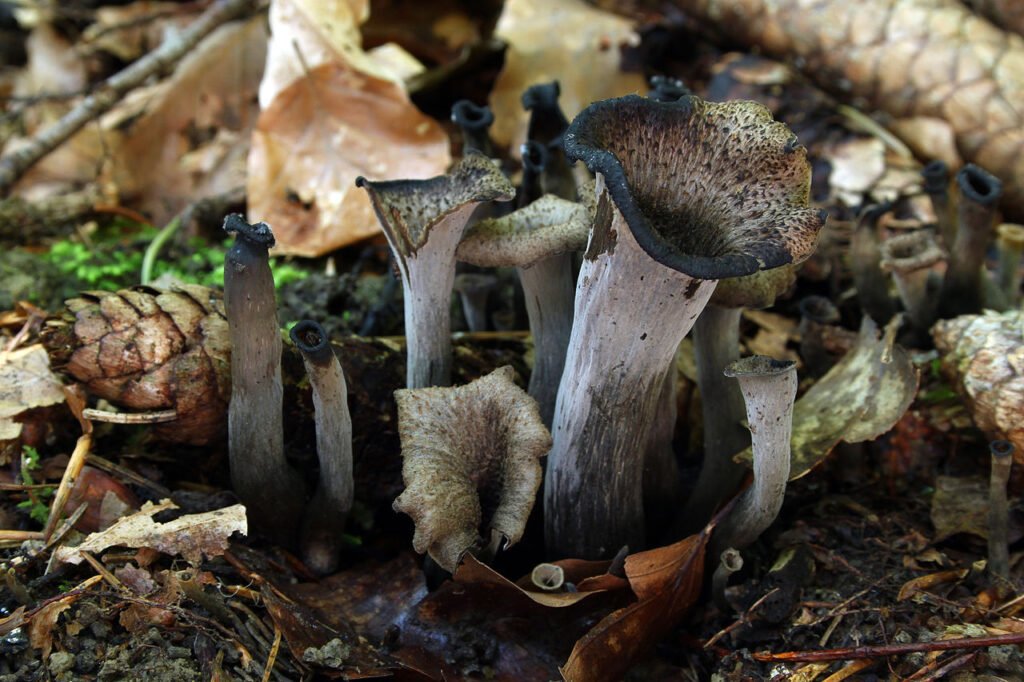
Many of the trees in the forest leading to Pedroveya are typical of European forests such as oaks, sycamores, willows, ashes, elms and hawthorns. We even spot a very Mediterranean evergreen oak (Quercus ilex rotundifolia), growing on the rocks of the defile! We also see a myriad of mushrooms, among which some delicious horns of plenty (Craterellus cornucopioides). Our guides also show us four types of ferns that can be distinguished from the number of segmentations of their leaves!

Strolling through Pedroveya and Dosango
As we continue our way, we come across other groups of hikers who also enjoy the trail. In Pedroveya, we stop at the village restaurant and enjoy some hot drinks and a good lunch outside, on the steps of an hórreo. Groups of vultures glide far above us and a white wagtail (Motacilla alba) observes us from a roof. Some dogs go around the place, looking for some hikers to pet them or cars to chase. After lunch, we walk past the typical Asturian houses. Instead of going back following the same trail, we head to Dosango. There, we see a tiny Eurasian wren (Troglodytes troglodytes) landing next to a field of corn.

José Carlos explains that this field is cultivated following the Native American agricultural technique of the “Three Sisters”, consisting of growing corn, beans and squash together. Each plant benefits from the others: the large leaves of the squash block the sunlight and prevent weeds from growing, while the corn provides structures on which the beans can grow. Those, in turn, provide nitrogen to the soil and help the growth of the other two! We are also pleased to see a man wearing traditional wooden clogs called madreñas! Their soles are carved in such a way that the wearer doesn’t slip while walking up a slope.
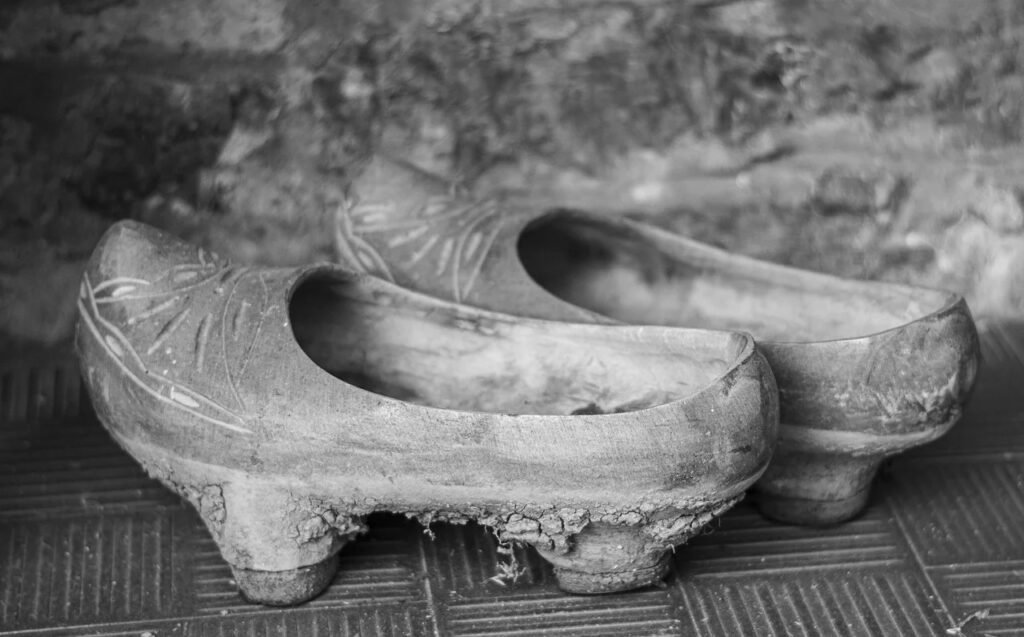
Back to Villanueva
It is time to head back to the bus stop. The landscape changes once again to a humid heath-like scenery and the sun takes its first peek through the clouds. Our guides show us the subtle differences between crocuses and meadow saffron (Colchicum autumnale). The latter has 6 stamens instead of 3! Despite its name, the saffron used to pepper so many dishes is actually produced from another variety of crocus! We go through another oak forest where we hear some Eurasian jays (Garrulus glandarius). Those birds are fundamental gardeners for oak forests. They prepare for winter by burying acorns and… often forget where they left them! This allows the forgotten acorns to pass winter and germinate out of reach of potential threats!

After a while, we reach the concrete road again and we need to walk along it for a little while before getting to our starting point. We were so engrossed in the walk that we didn’t see time pass and need to wait for the bus. We walk to Villanueva, the village a few hundred metres up the road, and walk around the streets. Finally, we reach a beautiful stone bridge stretched across the Trubia River and the village fountain where people used to come to wash their clothes and draw water. We decide to order some hot drinks at the bar across the streets and sip on them while enjoying the late afternoon atmosphere.
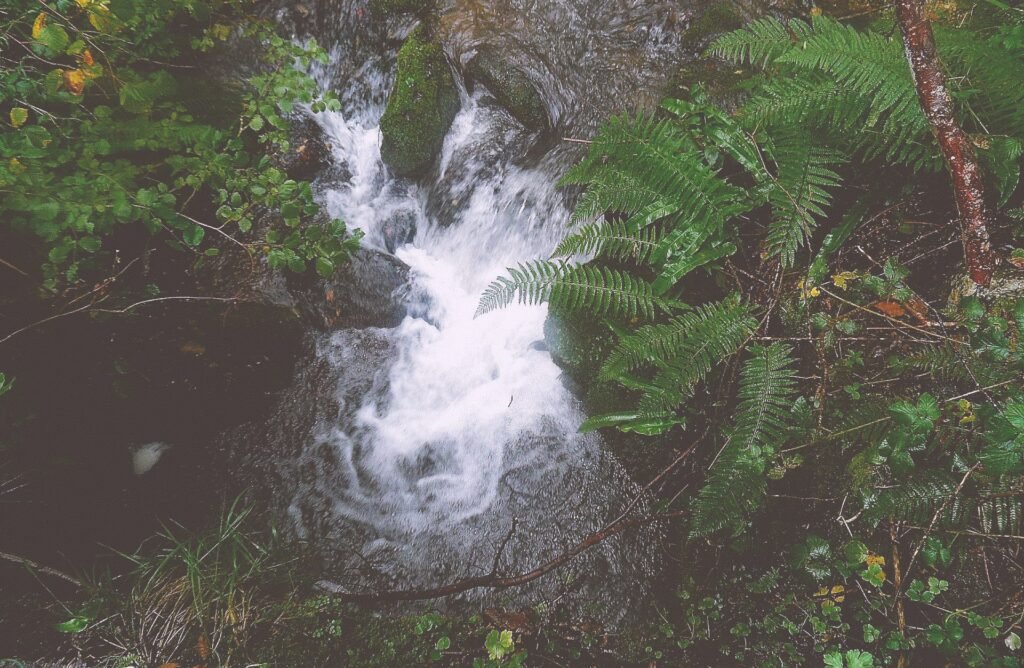
If you ever feel uncertain about going on a hike in autumn in Asturias, rest assured, for the warmth of the Asturian people will certainly make up for the cold temperatures!
More about Biodevas and the Hotel de Asociaciones Santullano
Biodevas organised this excursion to show that the Asturian urban youth is not so disconnected from nature as many might think ! They are engaged in many environmental projects and actions such as beach cleaning and environmental education. If you are interested in knowing more about what they do, you can follow them on Facebook, consult their website or contact them direcly through their whatsapp group. They organized this event with the help of the Hotel de Asociaciones Santullano, a public body organizing cultural events and trainings around Oviedo.
Your trip to Asturias
Do you want to know more about this route or combine it with a visit to Oviedo? Check our existing guided tours or our customizable trips to Asturias, customized guided tours and guidebooks or send us an email at info@intoasturias.com!
If you want to plan your stay in Asturias, make sure to take advantage of these useful links to book your trip:
- Although Las Xanas can be reached by public transport, most places in Asturias can only be reached by car. You can rent a car from Asturias Airport and Asturias’ main cities Oviedo and Gijon.
- Book your accommodation in, for example, Asturias’ capital Oviedo. You can also choose to stay in a rural accommodation in a nearby village, for example in Proaza or Las Caldas.
- If an Airbnb experience is more your style, here’s a list of different accommodations in the vicinity of Las Xanas.
By booking through these sites, the small commission we earn – at no cost to you – helps us maintain this blog so we can continue to offer you valuable travel tips and advice.

